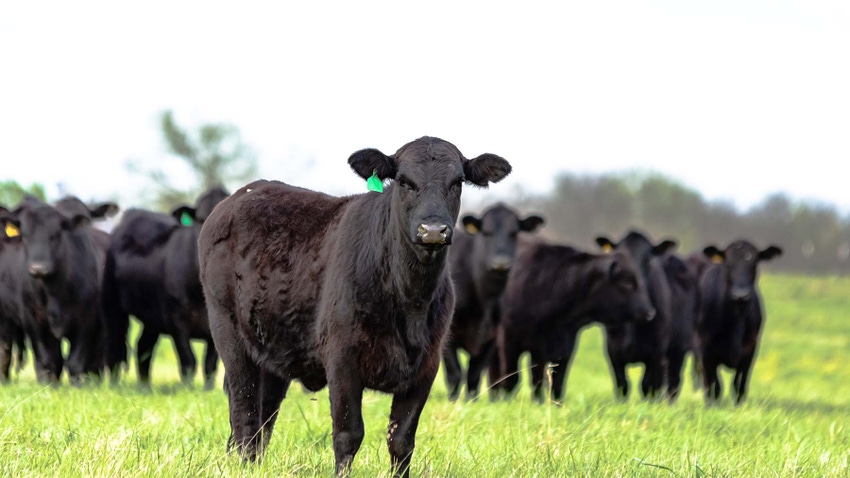
Early 2023 saw an exciting price rally for cattle futures. That rally ended abruptly in the fall of 2023, with prices erasing most of those early gains by year end. Now in 2024, cattle prices have regained a good portion of those losses, but what will the rest of 2024 hold?
What’s happened
The price rally that occurred in the cattle complex during 2023 was due to the reality of tight U.S. cattle supplies. That sentiment was solidified once again in the January Cattle Inventory Report, which confirmed the smallest U.S. cow herd at 28.2 million head – the lowest since the report was first established in 1972.
The All Cattle and Calves figure at 87.157 million head was 98% of a year ago. All heifers 500 pounds and over was 99% of a year ago. Heifers for beef cow replacement was 99% and heifers expected to calve was 98% and calves under 500 pounds came in at 13.284 million, only 97% of last year. The data points to further tight supplies of market-ready cattle over the next two years.
From a marketing perspective
In the three weeks since the Jan. 31, 2024, Cattle Inventory Report, live cattle and feeder cattle futures prices do remain firm to slightly higher. Not leaping higher, not ratcheting higher, not screaming higher, just slightly higher. One would think that with such underlying friendly news that cattle futures price might rocket higher, but they are not, as much of that underlying friendly news isn’t new. It actually has been known to the market for months.
On the supply side, we know that U.S. supplies of cattle are still historically small, which should lend support to firm prices ahead for now. Yet, looking at the cattle complex on the supply side, traders will be watching for signs and signals of potential expansion in the industry in the future. Now that grain prices have come down, and drought conditions have eased slightly in the country, will U.S. expansion start to occur at some point in 2024?
Concerns regarding demand? As of this writing, cumulative U.S. beef exports for 2024 are just over 229,000 tons, which is the lowest since 2019. Domestic demand remains in question as the U.S. economy limps along with higher interest rates still affecting the American consumer. Demand for hamburger and lower-priced cuts of beef will likely remain in firm demand for 2024, but the industry will be watching demand for higher priced cuts of steak as we head into the spring grilling season.
Further clues on potential price direction will arrive soon, looking ahead to this week’s Feb. 23 Cattle on Feed report. Ahead of the report, the estimates for the report are for cattle on feed to be 100.1% with the trade estimates ranging from 99.4% to 101.1%. Looking at placements, there is a wide range of guesstimates with the average estimated at 88.2% with the range of guesses from 81.6% to 94.9%. If the estimated placement number is correct, it would be the lowest placement number for January since 2007. Finally, the marketings number is estimated at 100.0% with a range of 98.6% to 100.3%.
Prepare yourself
Looking at the coming months of 2024, with the January Cattle Inventory Report confirming tight supplies, beef prices should likely stay firm, but will there be any new friendly news that would justify why prices would need to take out the previous price highs from 2023? Bull markets need to be continuously fed new bullish news to keep prices trending higher, and the industry might be on the verge of regurgitating known information (of tights supplies), versus adding new friendly information, (which would likely need to show up as even less supplies of cattle or stronger than expected demand).
Looking ahead, each monthly Cattle on Feed report will be scrutinized for clues regarding signs of expansion, including signs of higher-than-expected imports of beef potentially from Canada or Mexico. Ultimately, now that grain prices for feed are lower, and beef prices are still high, this may encourage producers to begin to think of rebuilding their herds. Obviously, it is not something that will happen overnight. However, in this industry, all it takes is the perception that the herd is expanding, to begin a price slide lower.
Reach Naomi Blohm at 800-334-9779, on X (previously Twitter): @naomiblohm, and at [email protected].
Disclaimer: The data contained herein is believed to be drawn from reliable sources but cannot be guaranteed. Individuals acting on this information are responsible for their own actions. Commodity trading may not be suitable for all recipients of this report. Futures and options trading involve significant risk of loss and may not be suitable for everyone. Therefore, carefully consider whether such trading is suitable for you in light of your financial condition. Examples of seasonal price moves or extreme market conditions are not meant to imply that such moves or conditions are common occurrences or likely to occur. Futures prices have already factored in the seasonal aspects of supply and demand. No representation is being made that scenario planning, strategy or discipline will guarantee success or profits. Any decisions you may make to buy, sell or hold a futures or options position on such research are entirely your own and not in any way deemed to be endorsed by or attributed to Total Farm Marketing. Total Farm Marketing and TFM refer to Stewart-Peterson Group Inc., Stewart-Peterson Inc., and SP Risk Services LLC. Stewart-Peterson Group Inc. is registered with the Commodity Futures Trading Commission (CFTC) as an introducing broker and is a member of National Futures Association. SP Risk Services, LLC is an insurance agency and an equal opportunity provider. Stewart-Peterson Inc. is a publishing company. A customer may have relationships with all three companies. SP Risk Services LLC and Stewart-Peterson Inc. are wholly owned by Stewart-Peterson Group Inc. unless otherwise noted, services referenced are services of Stewart-Peterson Group Inc. Presented for solicitation.
About the Author(s)
You May Also Like






